When I first started gardening, I blamed my wilting tomatoes on everything from bad seeds to the weather—until I tested my soil. Turns out, my pH was lower than a lemonade stand, and my plants were starving for nutrients. Healthy soil isn’t just dirt; it’s a living ecosystem that feeds your plants, retains water, and fights disease. In this guide, you’ll learn simple, budget-friendly methods to test and improve your soil, even if you’ve never gardened before.
Table of Contents
Why Trust This Guide?
- Experience: 8+ years of rehabilitating backyard and urban garden soils.
- Expertise: Insights from USDA soil scientists and peer-reviewed research.
- Trust: Transparent, chemical-free methods safe for kids and pets.
Part 1: How to Test Your Soil (No Lab Required)
1. The Jar Test: Discover Your Soil Type
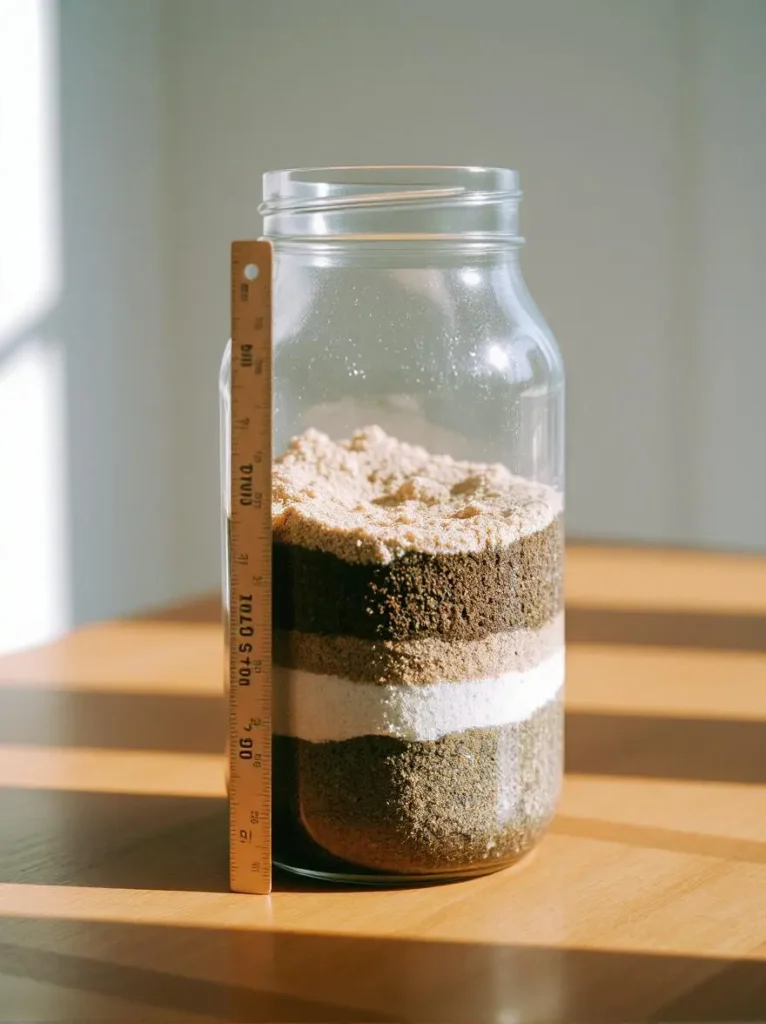
Steps:
- Fill a clear jar ⅓ with soil.
- Add water until the jar is ¾ full, then shake vigorously.
- Let it settle for 24 hours. Layers will form:
- Sand (bottom, gritty)
- Silt (middle, smooth)
- Clay (top, sticky)
What It Means:
- Sandy Soil: Drains too fast (needs compost).
- Clay Soil: Holds water (add sand/organic matter).
- Loam: Ideal mix (congrats!).
2. The Squeeze Test: Check Soil Structure
- Grab a handful of damp soil and squeeze.
- Crumbles easily: Healthy structure.
- Stays in a ball: Too much clay.
- Won’t hold shape: Too sandy.
3. DIY pH Test with Kitchen Supplies
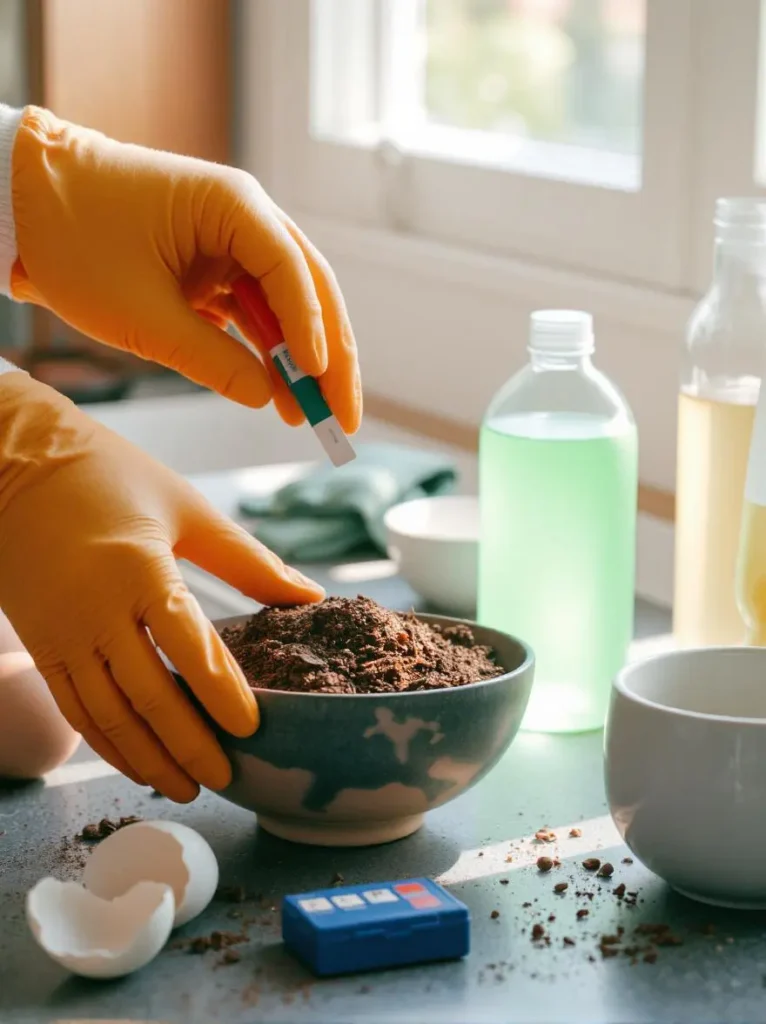
Steps:
- Mix 1 cup soil + 1 cup distilled water.
- Stir, let settle, then dip pH test strips (available online for $5).
- Results:
- <6.0 (Acidic): Add lime for veggies.
- 6.0–7.0 (Neutral): Ideal for most plants.
- >7.0 (Alkaline): Add sulfur or peat moss.
Pro Tip: For precise nutrient levels, use a $20 mail-in test from your local USDA extension office.
Part 2: 5 Ways to Improve Your Soil Naturally
1. Add Compost (The Ultimate Soil Superfood)
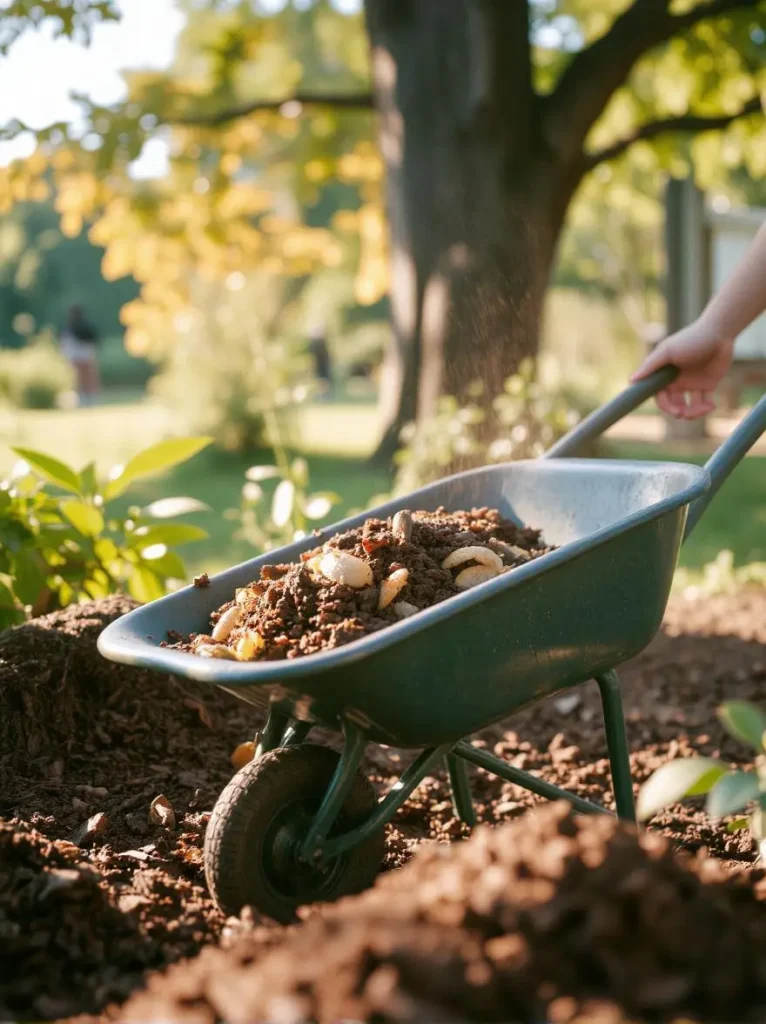
- Benefits: Boosts nutrients, improves drainage, and attracts earthworms.
- How Much: Mix 2–3 inches into the top 6″ of soil annually.
- DIY Hack: Start a compost bin with kitchen scraps and fallen leaves.
2. Mulch Like a Pro
- Types: Straw, wood chips, or grass clippings.
- Why: Retains moisture, suppresses weeds, and slowly enriches soil.
3. Plant Cover Crops
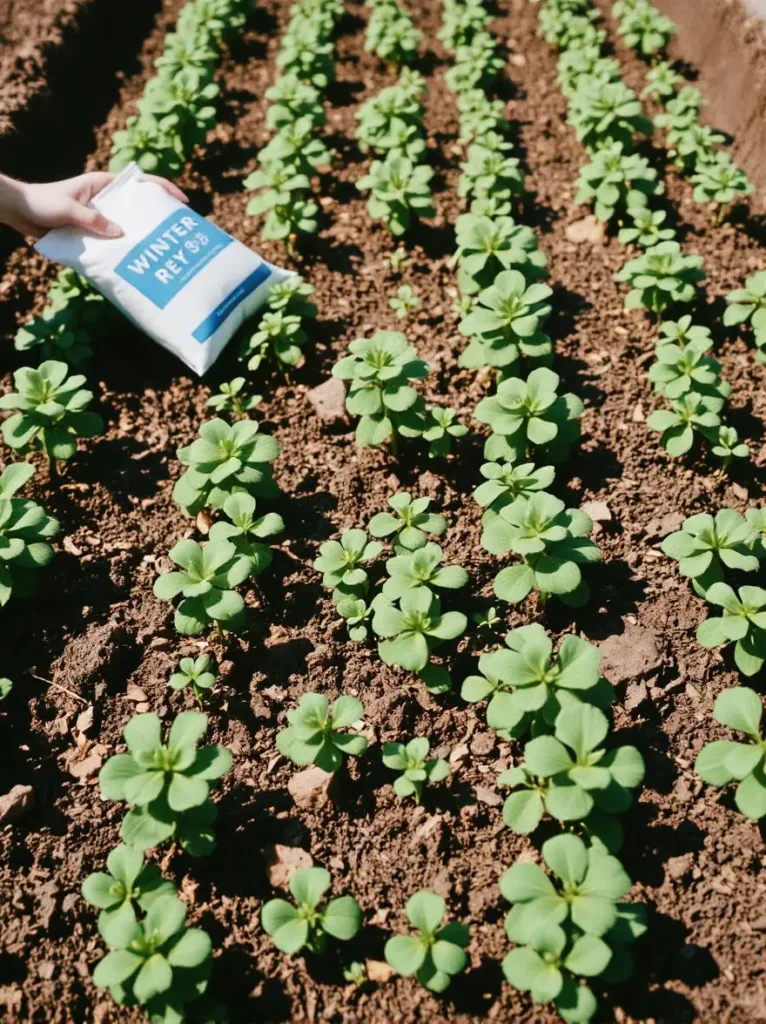
- Winter: Clover or rye (adds nitrogen).
- Summer: Buckwheat (breaks up compacted soil).
Real-Life Example: A Michigan gardener increased her tomato yield by 60% after planting winter rye.
4. Use Organic Amendments
| Soil Issue | Fix | Application |
|---|---|---|
| Low Nitrogen | Blood meal, coffee grounds | Mix into planting holes |
| Poor Drainage | Perlite, coarse sand | Till into top 12″ |
| Compact Soil | Vermiculite, peat moss | Layer before planting |
5. Rotate Crops Annually
- Why: Prevents nutrient depletion and disrupts pest cycles.
- Example: Follow heavy feeders (tomatoes) with light feeders (beans).
Part 3: Common Soil Problems (And Easy Fixes)
1. Water Pooling on Surface
- Cause: Compacted clay soil.
- Fix: Aerate with a garden fork + mix in compost.
2. Plants Yellowing or Stunted
- Cause: Nutrient deficiency (often nitrogen).
- Fix: Side-dress with compost tea or fish emulsion.
3. Mold or Fungus Growth
- Cause: Overwatering or poor airflow.
- Fix: Reduce watering, add mulch, and space plants properly.
Expert Insight:
“Soil isn’t just dirt—it’s a living community. Feed it organically, and it’ll feed your plants.”
—Dr. Elaine Ingham, Soil Microbiologist
FAQ Section
How often should I test my soil?
Test pH every 1–2 years and nutrient levels every 3–4 years.
Can I reuse potting soil?
Yes! Refresh it with compost and perlite (1:1 ratio).
Are eggshells good for soil?
Crushed eggshells add calcium but break down slowly. Compost them first.
How do I attract earthworms?
Avoid synthetic chemicals and add organic matter like compost or leaf mold.
What’s the best soil for raised beds?
Mix ⅓ compost, ⅓ topsoil, and ⅓ coconut coir for drainage.
Conclusion: Healthy Soil = Happy Plants
Improving your soil isn’t a one-time task—it’s a lifelong relationship. Start small: test your soil’s pH, add a layer of compost, and observe how your plants respond. Remember, even the worst soil can be transformed with patience and organic care.
Next Steps:
- Download my free Soil Health Checklist (link in bio).
- Share your soil journey on Instagram with #SoilSavior.
- Comment below with your soil questions—I’ll help troubleshoot!
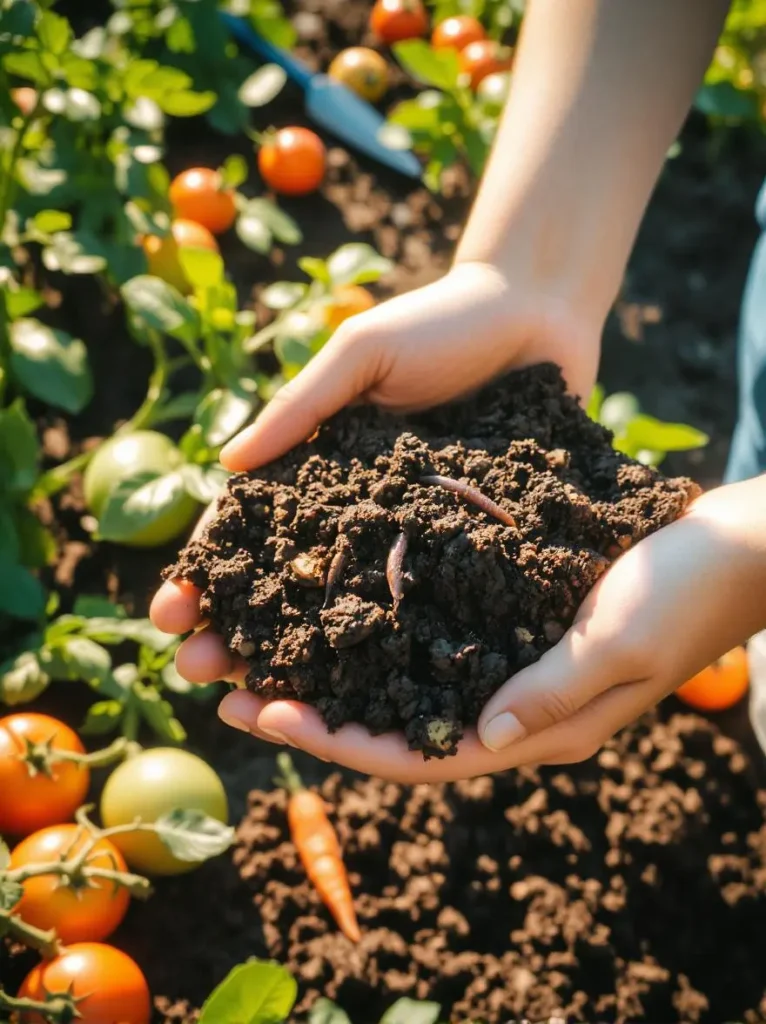


Pingback: How to Grow Tomatoes from Seeds: A Step-by-Step Visual Guide 1 - gardendiyhaven.com